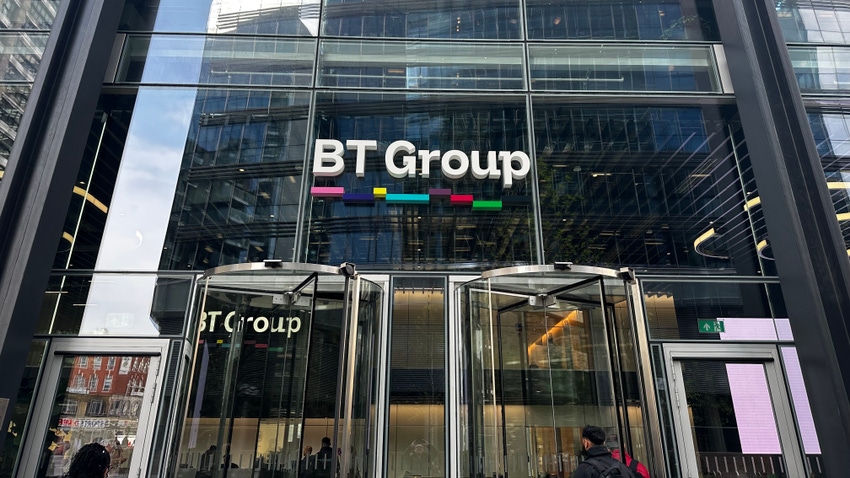BT has nearly switched off Huawei core days ahead of ban
The UK telco incumbent has made speedy progress in recent weeks on changing to Ericsson.

When BT spent £12.5 billion (US$15.8 billion, at today's exchange rate) on EE in 2016, executives knew the core network technology at the UK mobile operator would eventually have to go. Company rules at the telco incumbent forbade the use of Huawei in that part of the network, and EE's core was provided by the controversial Chinese supplier. Nearly eight years later, after a government clampdown on so-called "high-risk vendors," Huawei barely has a toe left in the door.
BT has been shifting to a newer platform built by Ericsson and is understood to have nearly completed the move days ahead of a government deadline, despite mainstream news reports implying it is badly behind schedule. Under the latest legislation, BT "must not make use of Huawei equipment or any services delivered by, or on behalf of, Huawei in the execution of its core network functions" after December 31. While the same rules apply to other UK operators, none of the main networks appears reliant on Huawei in the core. And BT now runs a negligible amount of traffic on the Chinese vendor's technology.
All its 4G and 5G systems are now on the Ericsson core instead, Light Reading has learned, and only a miniscule percentage of other traffic is still supported by Huawei. Work has ramped up quickly since November, when Mark Henry, BT's director of network strategy, reported that "millions of customers and over 50% of traffic" had been migrated to the new core. This week, the operator said it had made substantial progress and was working hard to complete the job.
The time it has taken shows just how fiendish switching from one core to another can be. BT was supposed to have removed Huawei by January this year but managed to secure an extension from the government, which evidently recognized the difficulty of meeting the former target. With core network technology largely about software, one challenge is ensuring the new system caters to all the old needs. Another apparent danger in flicking the switch for millions of customers at the same time is of a so-called "signalling storm" that can overload the network and lead to outages. This alone may have forced BT to proceed cautiously in transferring customers from Huawei to Ericsson.
You have ten days to comply
BT would certainly have little to gain from making the task out to be harder than it really is. The core is not a big financial investment compared with the much costlier radio access network (or BT's fiber lines) and the Huawei technology is probably depreciated in full. Maintaining two cores in parallel would add cost and chew up internal resources. BT also risks being fined up to 10% of revenues or £100,000 ($126,705) per day of non-compliance with government rules.
What's more, Huawei is unlikely to have been an enthusiastic assistant of the switch to a competitor. It warned of disruption to UK networks and economic damage when the government was first mulling a ban and has cut staff numbers in the UK from more than 1,000 to about 150. Annual revenues are known to have plummeted from more than £1 billion ($1.3 billion) several years ago to less than £200 million ($253 million).
The uncertainty is whether authorities will penalize BT if there is still a trace of Huawei in the system after December 31. Asked to comment, a spokesperson at the Department for Science, Innovation and Technology said: "We continue to work with operators to remove Huawei technology as quickly as possible while minimizing disruption for customers, and operators remain on track to remove it from 5G public networks by the end of 2027. We have already introduced an immediate ban on the installation of new Huawei equipment, limiting their presence in full-fiber infrastructure, and are removing technology from sites with national security implications."
Besides removing Huawei from the core by the end of this year, UK operators are also required to ensure it has been stripped out of their 5G radio access networks by the end of 2027. BT, Three and Vodafone all use Huawei's technology to varying degrees, but all managed to comply with a deadline earlier this year for capping it at 35% of the network, measured either by the number of sites or traffic levels. In BT's case, this would currently limit Huawei to about 7,000 sites.
Ofcom, the UK telecom regulator, will not report to the government on BT's progress against the December 31 target until Spring 2024. But it has not raised any red flags in the interim, while BT has not requested another extension. This does not rule out the possibility of a government penalty. But any such punishment would look a bit like one of those parking fines issued when only the car's rear bumper pokes out of bounds.
Read more about:
EuropeAbout the Author(s)
You May Also Like












